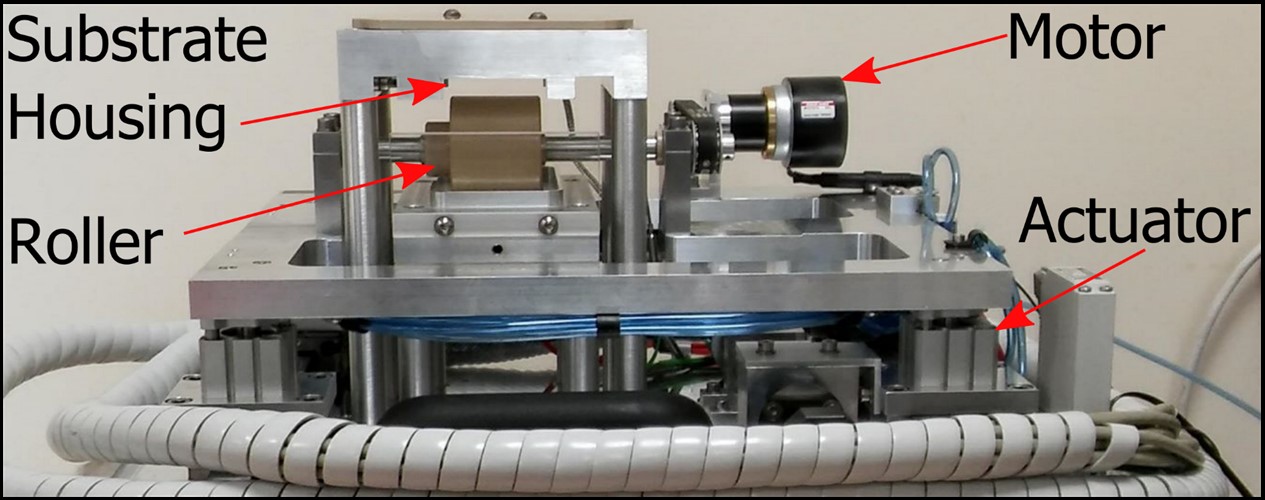Engine oil is used to lubricate and protect moving parts within an engine. Organic friction modifiers (OFMs) are added to engine oil formulations and are found to reduce friction between moving parts. The structure of OFMs at interfaces is generally thought to comprise the surfactant head-group attached to the hydrophilic surface with alkyl chains protruding into the bulk. Literature discusses slip planes, over the surfactant chain, as the reason for the friction reduction [1].
The first report of surface association reducing friction was by Hardy in 1922 who added different chain length alcohols, carboxylic acids and alkanes to examine boundary lubrication [2]. Modern commercial formulations use a mixture of OFMs and measuring their conformation between two metal surfaces is challenging, with neutron reflectivity being the preferred method. However, in an engine the formulation is subject to large shear rates and conceptually we expect the OFM conformation to change and possibly even detach from the interface.
To measure OFM conformation under shear we have built a neutron beamline tribometer which allows neutron reflectivity measurements from a well-defined iron oxide interface whilst being subject to well defined shear. A photograph of the instrument is shown in Figure 1 and we have run it in the INTER beamline at the Rutherford laboratory and FIGARO at the ILL as well as in x-ray mode on the IO7 beamline at DIAMOND [3]. Fitting of data is complex and we have taken an approach of using molecular dynamics to provide initial structures and reflectivity profiles for iteration on the measured data [4].
We are able to set shear rates up to 4 x 103 s-1. The tribometer design necessitated holding the substrate being held static for reflectivity measurements with a roller at a set speed and distance. To increase the illuminated area, the entire instrument reciprocates across the substrate. Currently we operate in the hydrodynamic lubrication regime and design of an instrument for boundary lubrication measurement is planned. The entire setup is portable to allow use on different beamlines as well as offline tests
Using glycerol monooleate (GMO) as a model OFM in dodecane we have, using SANS, seen bulk assembly of the GMO into micelles and molecular dynamics simulations indicate adsorption of micelles onto the metal surface resulting in a non-spatially uniform surface. This is consistent with the reflectivity measurements. The surface structures are resilient to shear.
When the dodecane is doped with ppm quantities of hydrophilic material the GMO micelles as well as those of another OFM, are found to form worm-like structures in the bulk. These are seen to sit onto the metal interface with an alignment, as evidenced by Yoneda scattering, even in the static case. The reflectivity profiles show a dependence on shear rate and there is a marked reduction in friction with certain formulations.
The results show a complex interplay of solution thermodynamics, surface adsorption and shear. The reduction in friction points to a novel mechanism which awaits explanation.
References:
[1] J. Geugan, M. Southby & H. Spikes, Friction Modifier Additives, Synergies and Antagonisms, Tribology Letters, 67:83 2019.
[2] W. B. Hardy and I. Doubleday, Boundary Lubrication. – the Paraffin Series, Proceedings of the Royal Society London A, 100: 550-574 1922.
[3] Alexander J. Armstrong, Thomas M. McCoy, Rebecca J. L. Welbourn, Robert Barker, Jonathan Rawle, Beatrice Cattoz, Peter J. Dowding, and Alexander F. Routh, Towards a high-shear neutron and X-ray reflectometry environment for the study of surface-active materials at solid-liquid interfaces, Scientific Reports 11:9713 2021
[4] Alexander J. Armstrong, Rui F. G. Apostolo, Thomas M. McCoy, Finian J. Allen, Rebecca J. L. Welbourn, James Doutch, Beatrice N. Cattoz, Peter J. Dowding, Alexander F. Routh, and Philip J. Camp, Experimental and Simulation Study of Self-Assembly and Surface Adsorption of Glycerol Monooleate in n-Dodecane onto Iron Oxide. Nanoscale 16: 1952-1970 2024.


